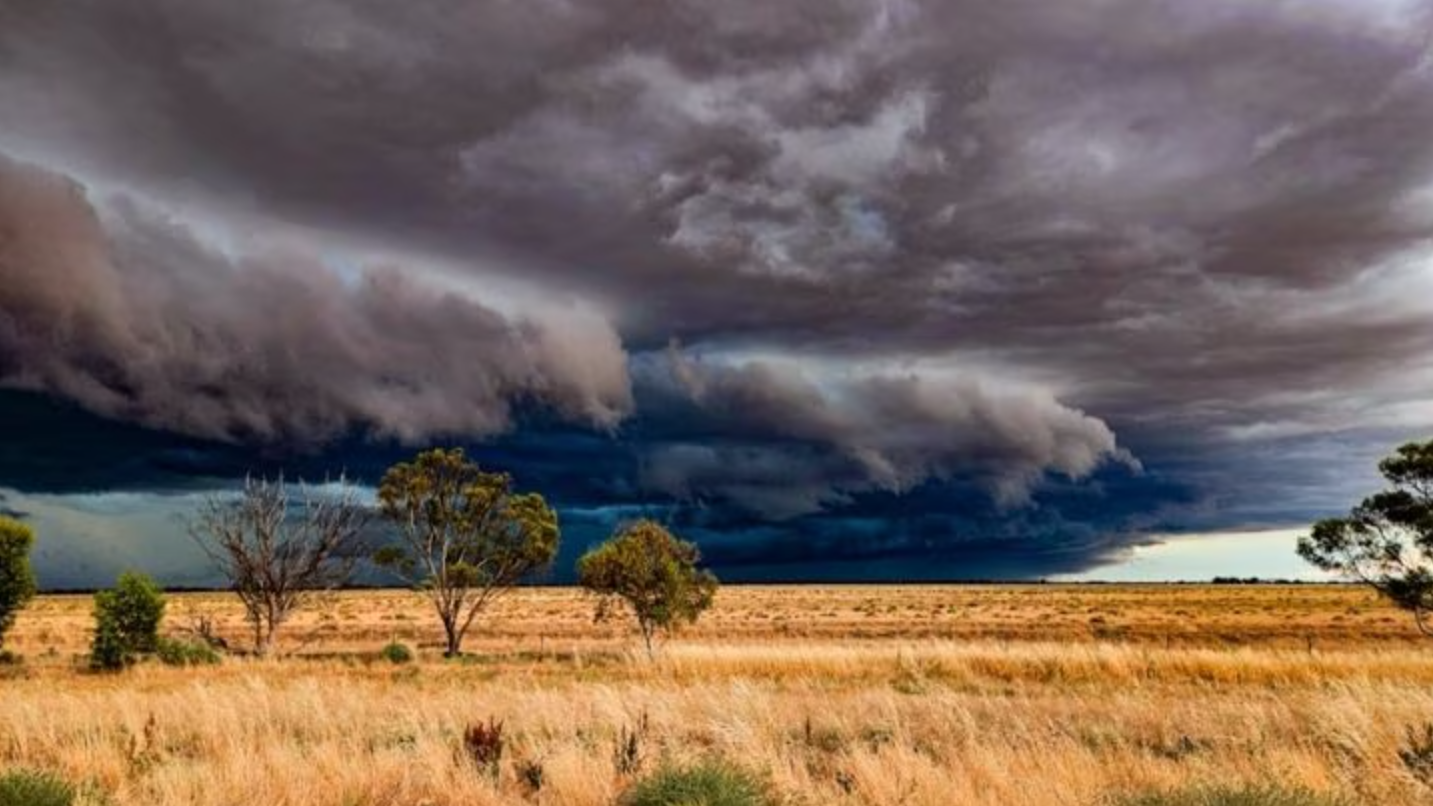Scientists reveal how Earth’s early weather shaped the evolution of life
New research shows how wet-dry cycles on early Earth guided chemical evolution, helping form life’s building blocks.

Scientists explore how early Earth’s wet-dry cycles shaped molecular evolution, driving the formation of life’s fundamental building blocks. (CREDIT: CC BY-SA 4.0)
Billions of years ago, the molecular building blocks of life emerged from a complex web of chemical and geological processes. This transformation laid the foundation for biological systems, culminating in the formation of DNA, RNA, proteins, and cellular membranes. A key factor in this process was environmental energy, which drove the formation of increasingly complex biopolymers.
While the origins of life remain one of science’s most challenging questions, researchers continue to explore how chemical evolution may have guided molecular organization. Recent studies highlight the importance of wet-dry cycles—periodic shifts in water availability—suggesting that these fluctuations played a crucial role in shaping early chemistry.
Through a process of dehydration and rehydration, simple molecules formed larger, more complex structures. During dry phases, molecules linked together into longer chains, and in wet phases, these chains partially broke down. This cycle enabled chemical selection, allowing only the most stable and functional molecules to persist.
Scientists believe that similar environmental conditions on early Earth could have driven the emergence of life's fundamental components.
A New Perspective on Chemical Evolution
A recent study published in Nature Chemistry investigates how chemical mixtures evolve under repeated wet-dry cycles, offering new insights into the structured transformation of molecular systems.
Led by Dr. Moran Frenkel-Pinter from the Hebrew University of Jerusalem and Prof. Loren Williams from the Georgia Institute of Technology, the research challenges the notion that prebiotic chemistry was purely chaotic. Instead, it suggests that early molecular evolution followed systematic patterns driven by environmental conditions.
The team conducted experiments using organic molecules with diverse functional groups, including carboxylic acids, amines, thiols, and hydroxyls. These molecules were subjected to repeated wet-dry cycles under near-ambient temperatures, mimicking conditions on ancient Earth.
Related Stories
The findings revealed three crucial insights:
- Chemical systems evolved continuously without reaching equilibrium.
- Selective pathways prevented uncontrolled complexity.
- Molecular species exhibited synchronized population dynamics.
Rather than reacting randomly, the molecules organized into increasingly complex structures over time. “This research offers a new perspective on how molecular evolution might have unfolded on early Earth,” said Dr. Frenkel-Pinter. “By demonstrating that chemical systems can self-organize and evolve in structured ways, we provide experimental evidence that may help bridge the gap between prebiotic chemistry and the emergence of biological molecules.”
Building Complexity Through Environmental Selection
The study explored how diverse chemical mixtures interacted in response to fluctuating water levels. Initial mixtures contained hydroxy acids, amino acids, mercapto acids, urea, sugars, amphiphilic long-chain carboxylic acids, purines, and divalent cations. Each component could react with others, forming a vast network of potential products.
Results showed that wet-dry cycling promoted the formation of specific molecules through a process of progressive chemical refinement. First, monomers linked together to form esters and thioesters. These intermediates then transformed into more stable amides, resisting hydrolysis during subsequent wet phases. Some molecules, such as peptides, remained trapped in high-energy states, persisting despite environmental fluctuations.
This suggests that early environmental conditions actively shaped molecular evolution. Instead of an uncontrolled explosion of chemical diversity, natural selection guided molecular assembly, favoring compounds with greater structural stability and functional potential. This process may have played a key role in the emergence of biomolecules capable of supporting life.
Implications for Synthetic Biology and Beyond
Beyond the study of life’s origins, these findings have implications for synthetic biology, nanotechnology, and materials science. Understanding how molecular systems evolve under environmental constraints could lead to innovative approaches in designing self-organizing chemical networks.
By harnessing principles of controlled chemical evolution, researchers may develop novel materials, catalysts, and drug delivery systems. The ability to guide molecular assembly through environmental factors could also inform the development of artificial life-like systems, offering new possibilities in biotechnology.
While the exact pathway from simple molecules to living cells remains a mystery, studies like this bring science closer to understanding the forces that shaped life’s earliest chemistry.
By revealing how environmental cycles guided molecular evolution, researchers continue to uncover the intricate steps that transformed chemistry into biology.
Note: Materials provided above by The Brighter Side of News. Content may be edited for style and length.
Like these kind of feel good stories? Get The Brighter Side of News' newsletter.
Rebecca Shavit
Science & Technology Journalist | Innovation Storyteller
Based in Los Angeles, Rebecca Shavit is a dedicated science and technology journalist who writes for The Brighter Side of News, an online publication committed to highlighting positive and transformative stories from around the world. With a passion for uncovering groundbreaking discoveries and innovations, she brings to light the scientific advancements shaping a better future. Her reporting spans a wide range of topics, from cutting-edge medical breakthroughs and artificial intelligence to green technology and space exploration. With a keen ability to translate complex concepts into engaging and accessible stories, she makes science and innovation relatable to a broad audience.



